服务热线
WEME Case | Marina Waterfront Living Room - China Central Railway Century Shangcheng Demonstration Area Landscape is Opened
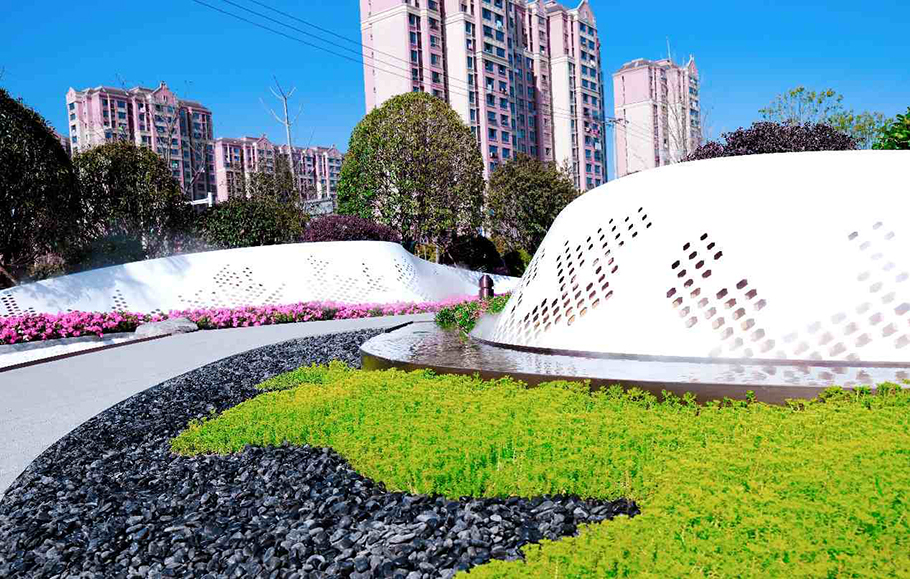
1. General Introduction
The location of China Railway Century City is Fengxian District in Shanghai, which is close to the East China Sea, and the aboriginal people are mainly fishermen. The local culture is characterized by the virtuous people, and the main feature of the architecture is the water village lane. Therefore, the landscape design of the community service center is a landscape design with the theme of marine culture and water town living room. The building is the community service center, which is the living room of the community, and the parking lot is underground. The original environment is surrounded by large water surface and close to the sea, so this design still adopts large water surface and integrates marine culture in the design.
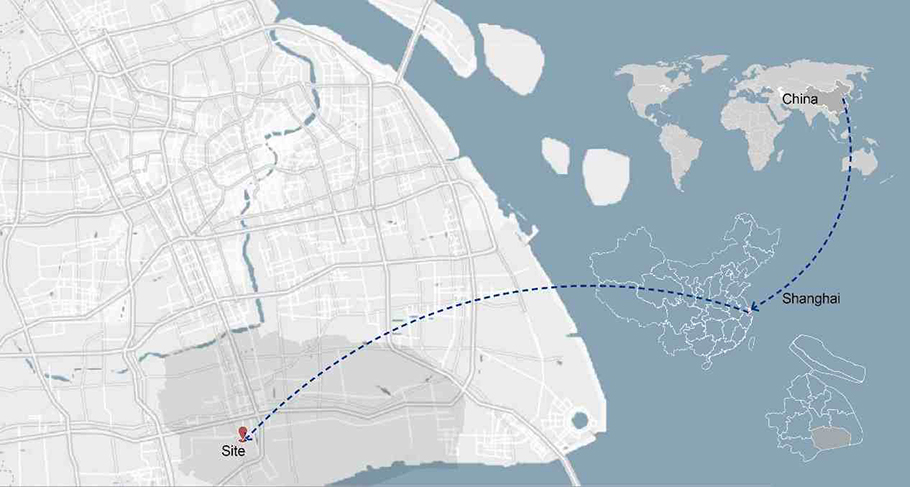
Sustainable landscape design and ecological design principles are discussed in depth. Local culture and cultural sustainability are emphasized, and the local characteristics of the lilong architectural form are preserved; ecosystem protection is an important principle, achieved through the use of appropriate plants, soil and water treatment techniques; recycling and conservation is another important principle, achieved through the recycling and reuse of water, energy and materials; and spatial layout and access is the fourth important principle, achieved through the design of appropriate roads, trails and plazas; emphasis on movement and health is the fifth principle; and management and maintenance is the sixth important principle, ensuring the sustainability and aesthetics of the landscape through the use of appropriate management and maintenance strategies.

The overall area of this project is approximately 5,000 square meters. Below the methods used to apply sustainable landscape design and eco-design in this project as well as the description of each zoning.
2. Realization of sustainable cultural landscape
The landscape design of this residential area gathers the designers' efforts and wisdom to skillfully integrate the natural scenery and the community's cultural characteristics of this area. In terms of aesthetics, the elements and the way of combination of the landscape design focus on the sustainability of the cultural landscape and the content of ecological design, aiming to create an aesthetic and practical living place.
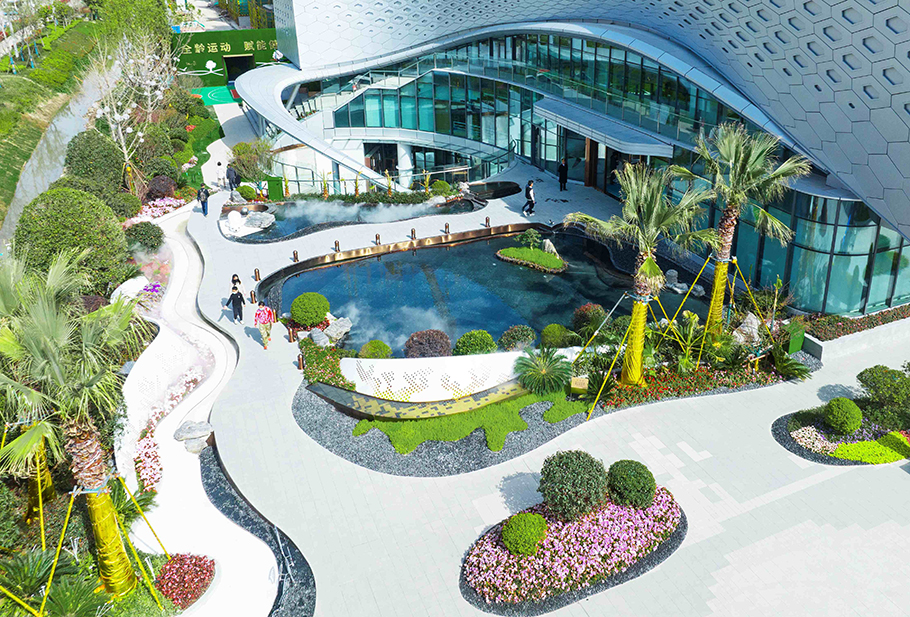
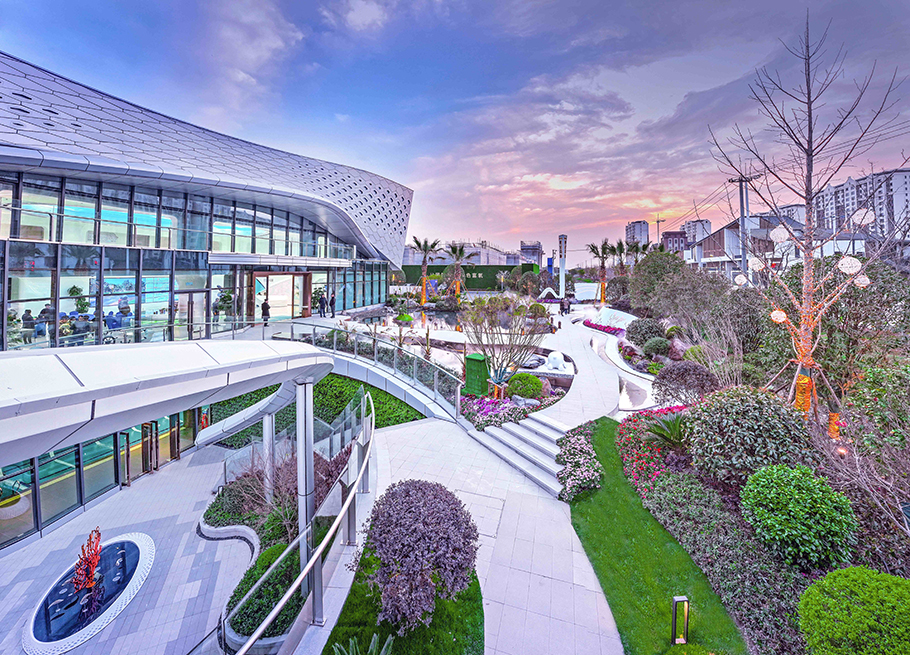
1. Local culture and cultural sustainability:
The embodiment of cultural landscape sustainability refers to the integration of local, historical and cultural elements into the process of creating landscape space in order to enrich the overall image and meaning of landscape space. This project gives full consideration to local cultural heritage, customs, historical traditions and urban spirit, such as incorporating design elements with local natural environment features; or utilizing cultural symbols for cultural theme creation to create a series of cultural landscapes with connotations.
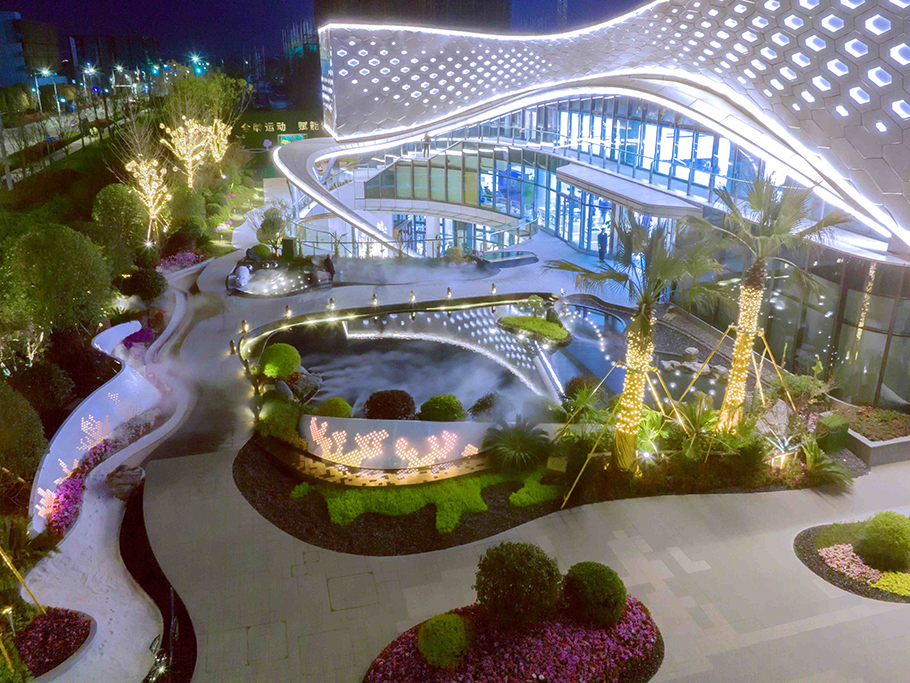
The logo design of this project is inspired by the sculpture "Daughter of the Sea", through the hollowed-out design of the light, the light turns from blue to orange as if the sun is rising on the sea. The outer wall of the community center looks like an unfolded fishing net, and the whole is like a boat moored in the harbor, symbolizing that home is the harbor of the heart.
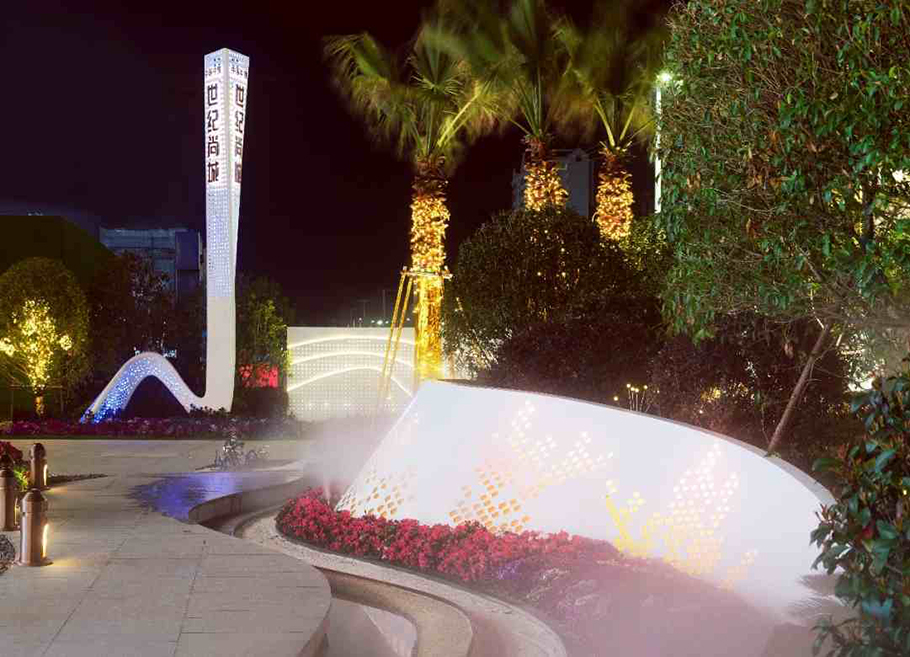
By using more natural elements, such as waves, reefs and sandy beaches, the designers created a vibrant and dynamic landscape space for this area. At the same time, the designer also protects the natural environment by including coastal palm forests, marine animal sculptures and other vegetation in the design to make the landscape more natural and beautiful.
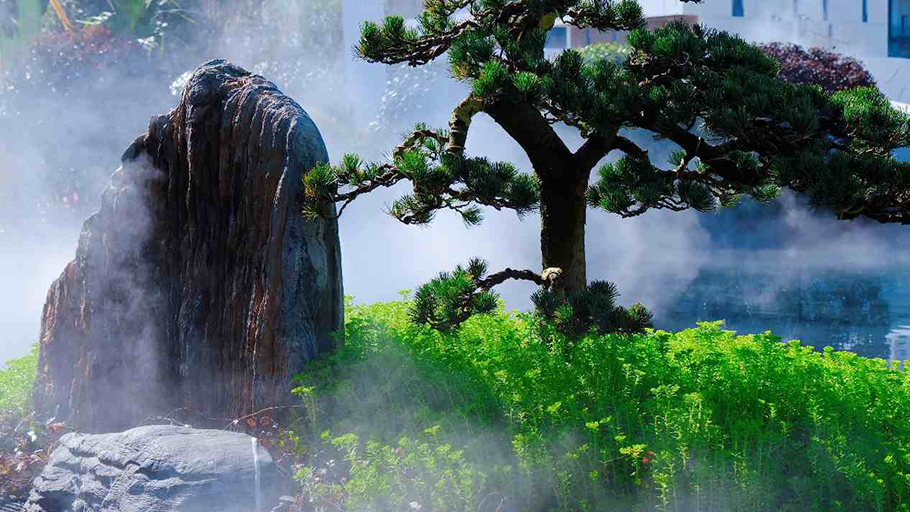
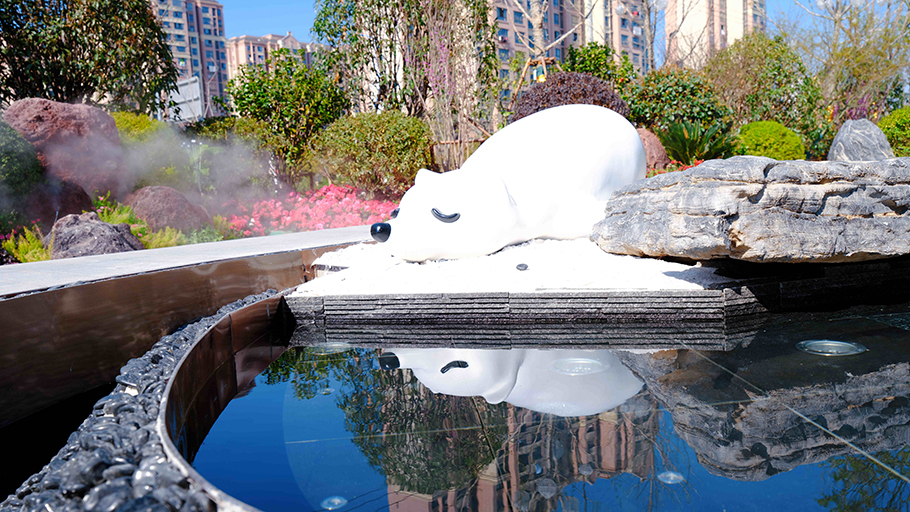
2. Ecosystem sustainability:
Ecosystems are the basis for maintaining human survival, so the protection and construction of ecosystems should be emphasized in sustainable landscape design. Landscape designers can fully study and utilize local vegetation, water resources, soil, etc., and use plants to increase urban green coverage, improve urban air quality, and slow down the urban heat island effect; strengthen the maintenance and management of water resources, such as rainwater collection, promote water recycling, reduce urban drainage, and prevent the waste of water resources. At the same time, landscape designers should pay attention to biodiversity, make the ecosystem as rich and stable as possible, and increase the ecosystem's adaptation and resilience to the environment.
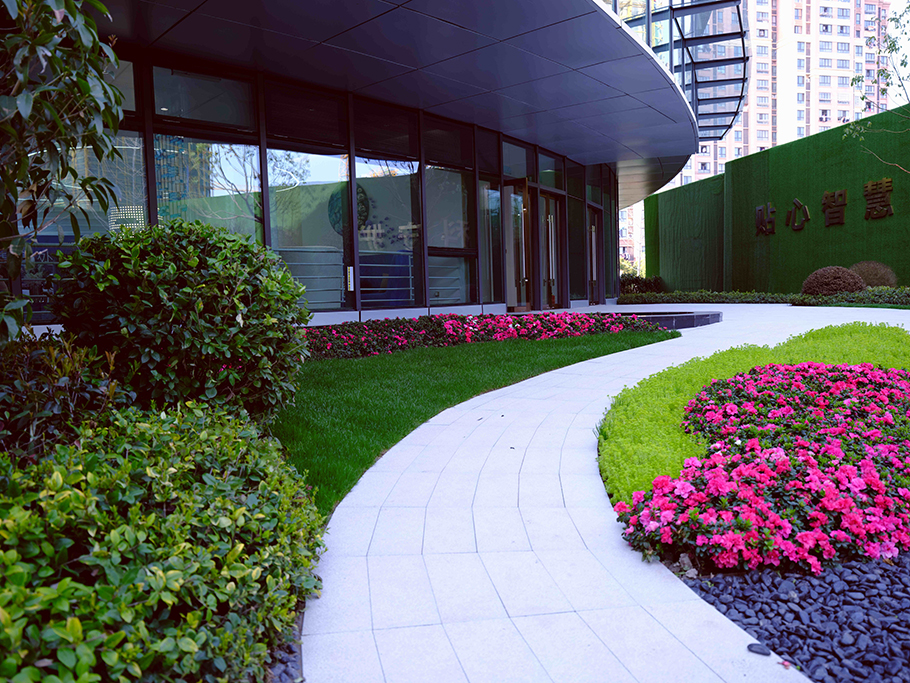
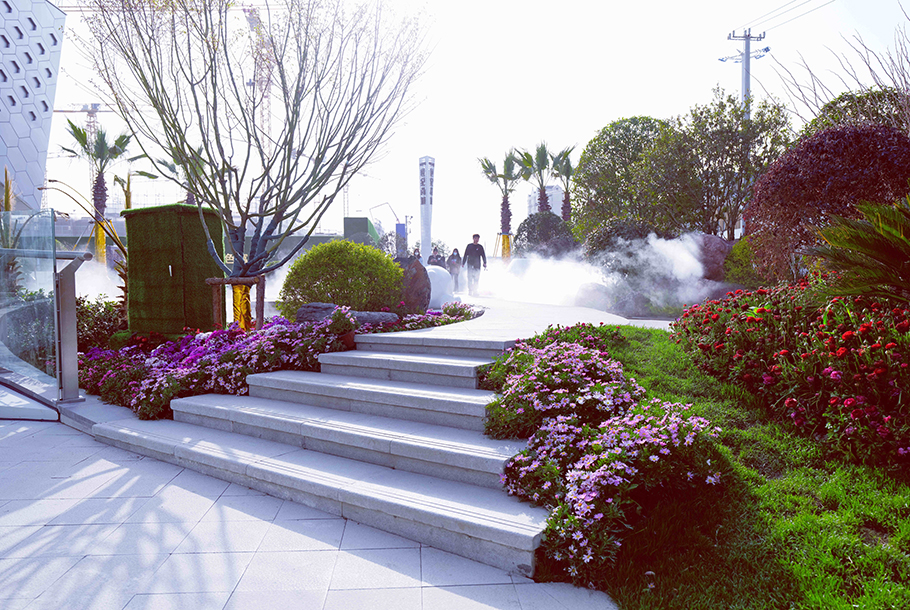
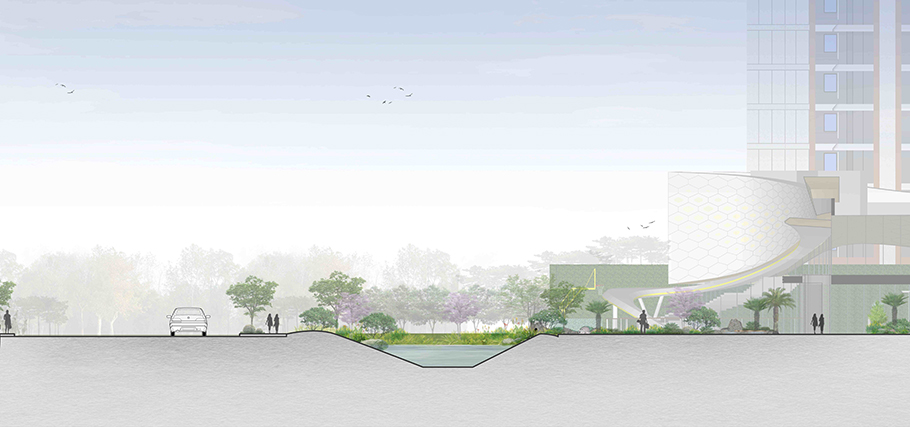
3. Principle of recycling and saving:
Recycling and conservation are important concepts of sustainable development, which should likewise be integrated into sustainable landscape design. Landscape designers can strengthen the utilization and management of resources, reduce the generation of waste and pollutants through the recycling of waste materials, and realize the conservation and reuse of resources.
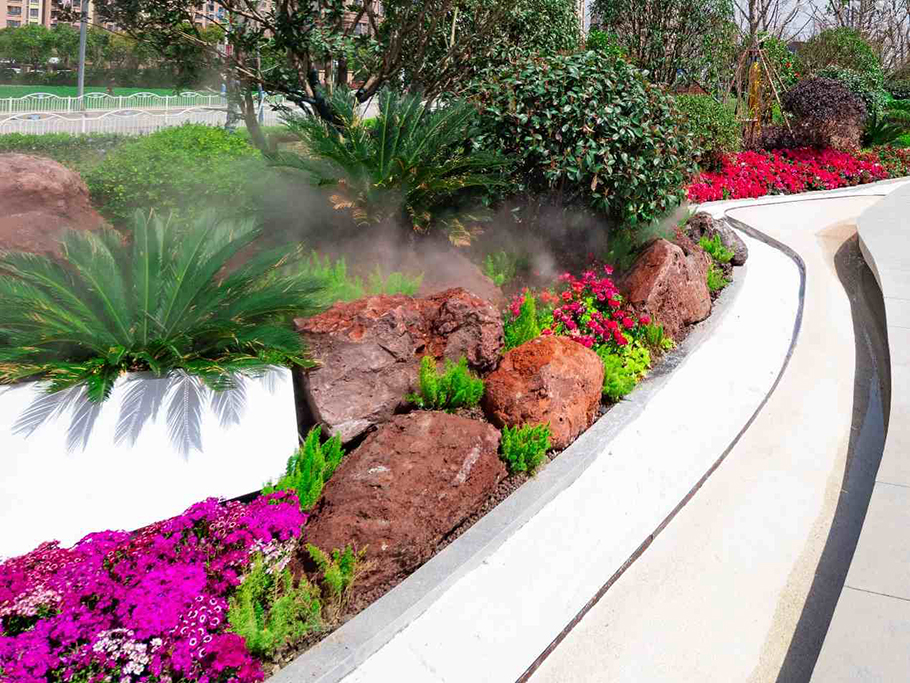
For example, recyclable materials, such as natural materials and recycled building materials, can be used in landscape design. This can not only promote sustainable development in a practical way, but also enhance the city's image and the public's environmental protection awareness.
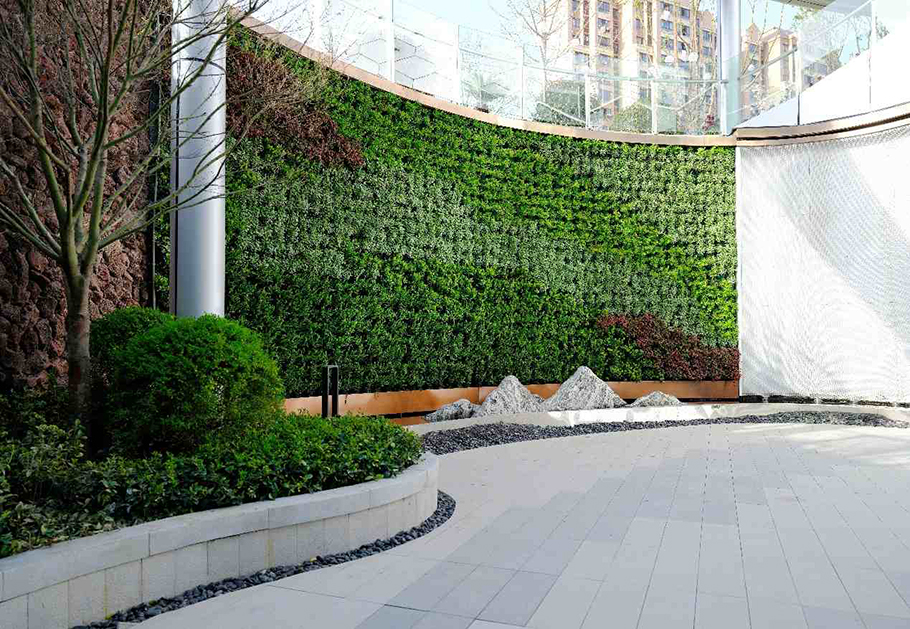
3. The design of each area of the landscape is presented with great care.
This area contains the landscape design of the front yard and backyard of the community center building and the sunken courtyard. According to the above design principles, we focus on the spiritual fortress indication area, beach reef landscape area, trestle bridge bay landscape area, sunken garden landscape area, etc. Firstly, the spiritual fortress indication area, which takes the shape of the "Daughter of the Sea", has been designed with great care.
First of all, it is the Spirit Fortress Indication Area, which takes its shape from the "Daughter of the Sea", which must be the image of the beautiful, mysterious and compassionate mermaid borrowed by the designer from the western legend. The elements here are simple and sharp, summarizing a modern, abstract aesthetic. This design style fully demonstrates the aesthetic orientation of the modern industrial era and the extreme concern for nature and humanity.
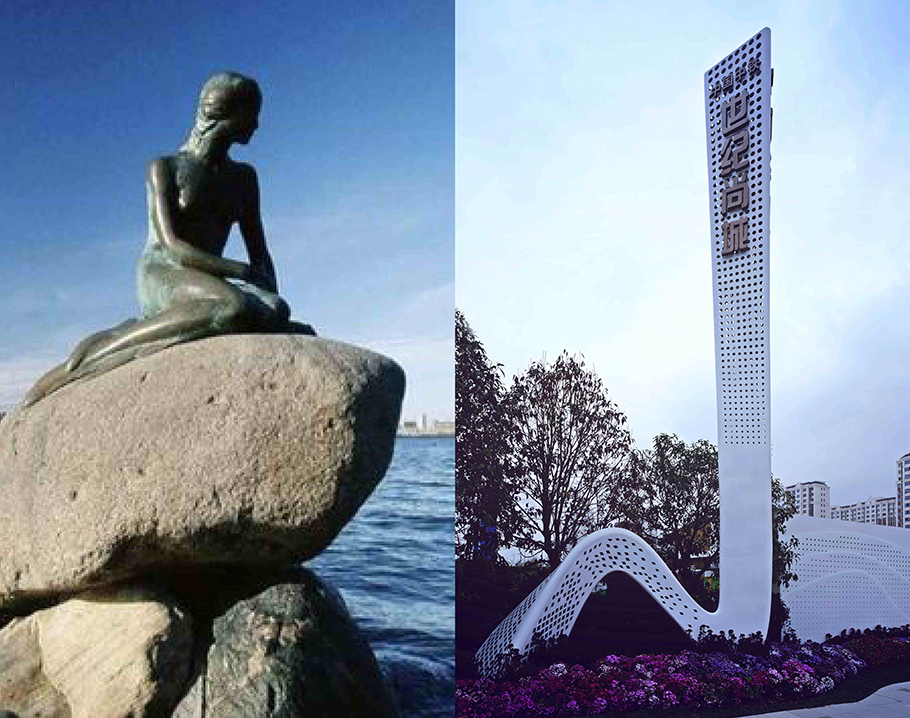
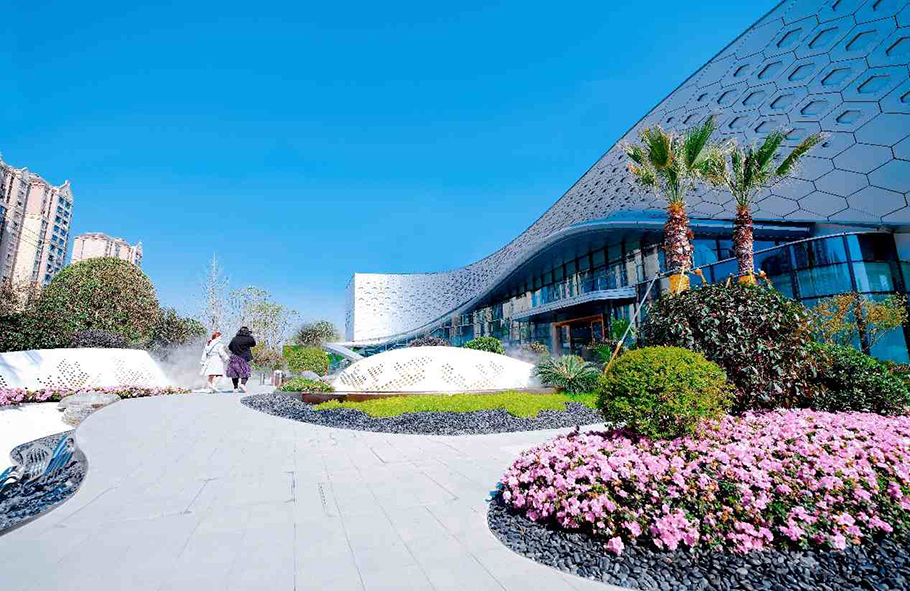
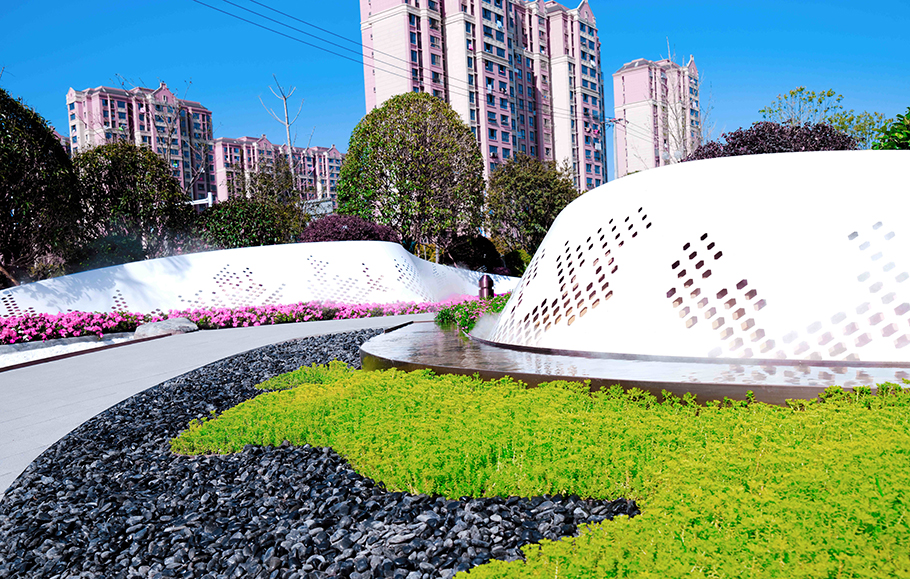
And the trestle bridge bay landscape area, there is no doubt that presents a romantic harbor night scenery, there are visitors to cover their mouths to drink through the night fog Sen, as if the waves of the fountain, relying on the trestle bridge, as if a moment to focus on the center of the bay, so that people's spirits bright, as if they are in a small seaport side. Such graceful and varied landscape elements constitute an illusory and interesting bay space, attracting countless people to come and savor the beauty of this area.
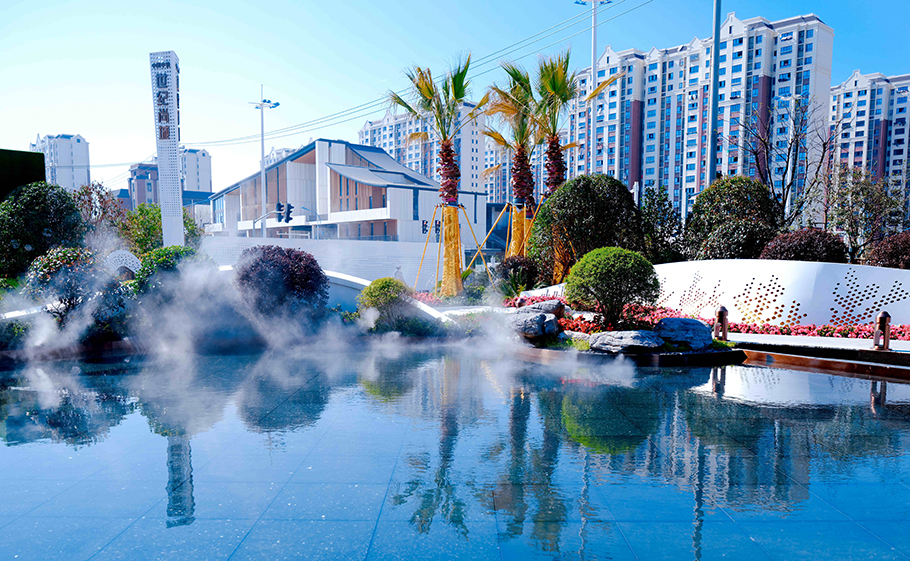
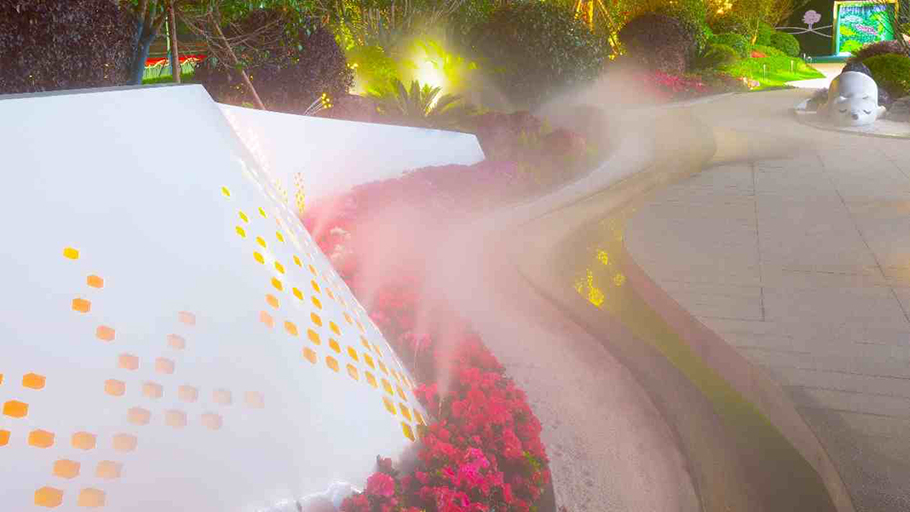
The sunken garden landscape area, on the other hand, realistically reproduces the natural landscape with artificial landscape appearance, such as the beautiful coral island in the blue ocean.
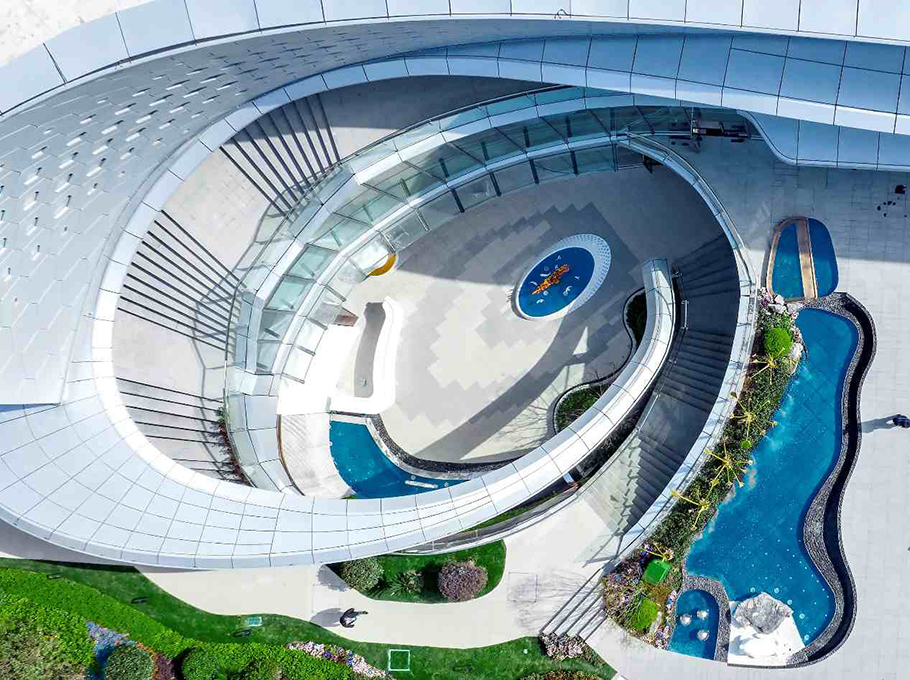
The designers used a large number of coral sculptures, undersea installations, floor paving, and art installations to create a sunken garden that simulates the undersea scene. Such a design style not only breaks the flower- and vegetation-based gardening approach, but also inspires deeper thinking and exploration of nature and the future of mankind.
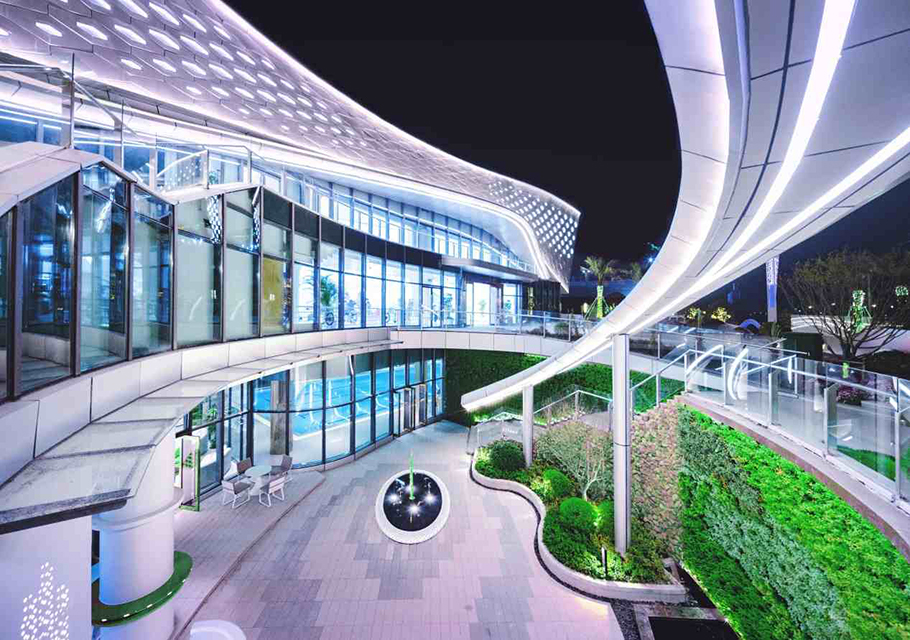
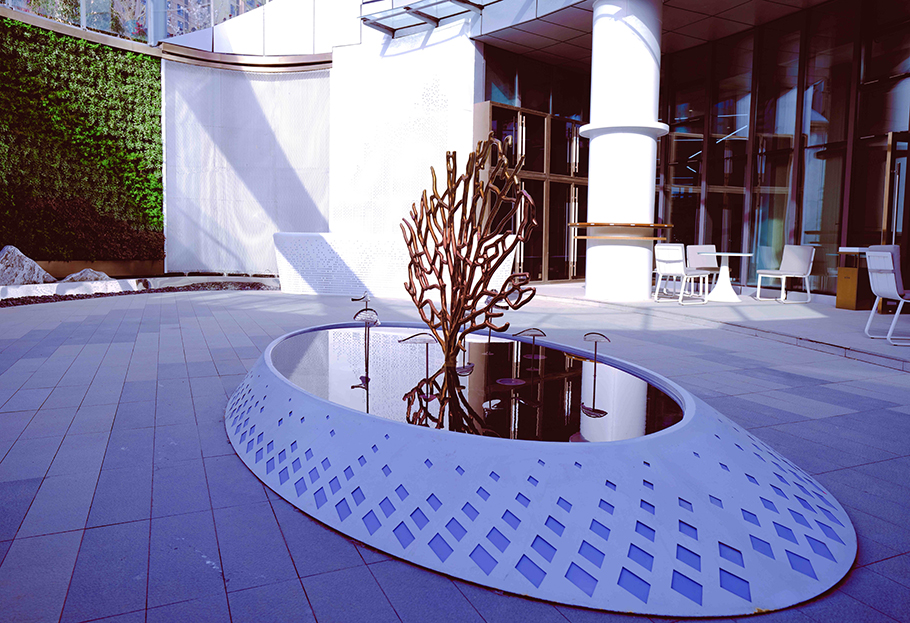
Finally, the central landscape area of the community presents a picture of the harbor in an abstract form, where the design of fishing nets in the shape of a boat expresses the idea that the residential area is situated on this ocean. This design style sees the residential area as a beautiful boat sailing sensitively on the sea, reflecting the mission and responsibility of the community in the social relay.
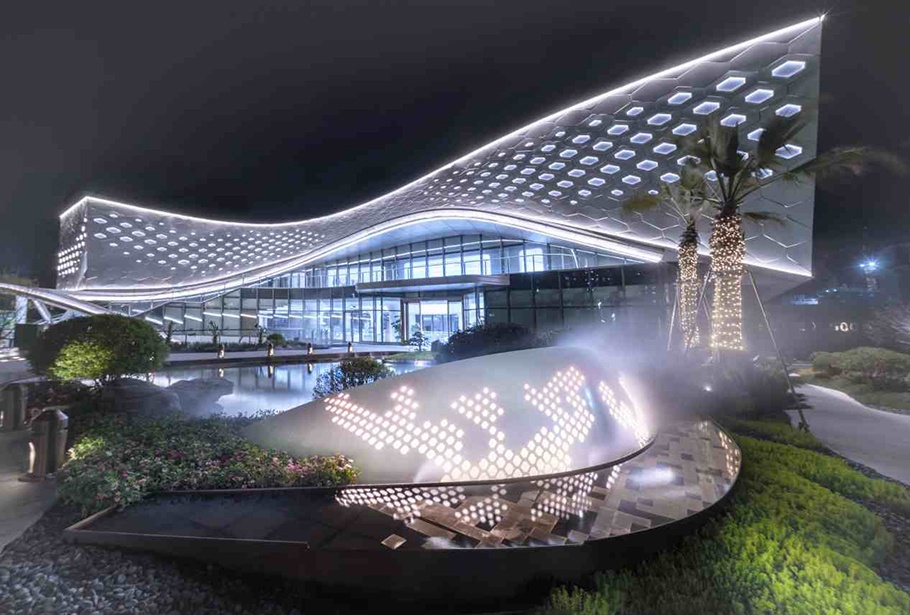
The landscaping is stunning, a natural work of art that protects the residents' homes. People return home and enjoy this wonderful and cozy environment as if they are in a quiet and beautiful dream. These beautiful landscapes will eventually lead people back to their homes, like a haven for the soul.
4. Conclusion
The way to realize the landscape design of Century Shangcheng of China Railway focuses on the realization of sustainable cultural landscape. The designer integrates the local natural scenery and community cultural characteristics, focuses on the protection and construction of the ecosystem, strengthens the use and management of resources, and realizes the saving and reuse of resources through the recycling of waste materials. The design of each area of the landscape is presented with great care, including the spiritual fortress indication area, the beach reef landscape area, the trestle bridge bay landscape area, and the sunken garden landscape area, constituting a landscape space full of vigor and vitality, and creating a beautiful and comfortable environment for the residents.
